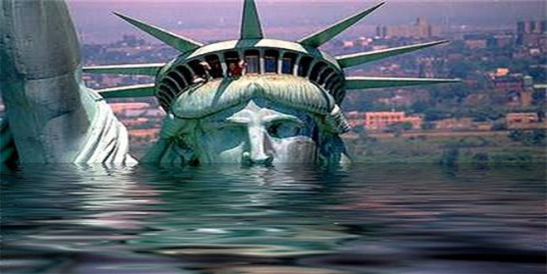Pasqualina Curcio Curcio
It is not only a serious economic crisis that the United States is currently experiencing but also a profound humanitarian crisis that its people have been suffering for decades.
We have to look in perspective at the recent declarations of Donald Trump about the spread of the coronavirus in the United States in which he said that, in the best of cases, by the end of April, they would be counting 200 thousand lives lost, he also said if that was the case it would represent a great achievement for his administration (as if one life alone was not already a cause of pain).
The death of 200,000 people in the US from COVID-19 would represent a coronavirus mortality rate 256 times higher than that recorded by China and, if the current lethality rate (2.48%) is maintained, it would mean around 8 million people infected in the US (if the lethality increases to, for example, 10%, the number of people infected, if there are 200,000 deaths, that would be 2 million Americans). It is likely that this fatality rate will increase due to the characteristics of the health system in the US, which, being private, limits access to testing and care for people with coronavirus.
As of today, 362,573 people with Covid-19 and 10,720 deaths have been recorded in the US, which is equivalent to a mortality rate and a prevalence rate (number of cases among the total population) 8 and 13 times higher than that of China respectively, despite the fact that, unlike that Asian country, Covid-19 did not take Trump by surprise, he had a couple of months to prepare.
In default
Even if the rating agencies do not say so, the US is in a critical default condition due to an unpayable foreign debt that exceeds 21 trillion dollars. Not even all the gold in the world would be enough to pay it off, and the reserves it has only cover 2% of that debt. Its international reserves are so low that, according to the World Bank, they barely cover 1.4 months of imports, a situation that makes the country very vulnerable in the context of the recession that is caused by the social quarantine.
The classic solution of turning on the little machine that makes dollars and paying off the debt is no longer a good idea because the world financial system is getting rid of the petro-dollar-paper, which explains the collapse in its value, and is rather looking to buy gold which, it seems, is safer.
We must add the fact that the United States is highly dependent on imports from China and that its hydrocarbon reserves have been worryingly depleted to the point that, being the world’s largest consumer of oil, even more so than China even though its population is four times smaller, it had to opt for the costly and polluting technology of fracking. In colloquial terms, the United States is not in its best economic moment, it is at a disadvantage with China, so the desperation to get oil and gold is increasing.
The humanitarian crisis
The tense calm in which the American people live daily, terrorized by the repressive policies of the current White House government, seems less and less calmed by the evident manifestation of the internal humanitarian crisis.
The loss of control over the covid-19 pandemic is another example, although now amplified given the exponential nature of the coronavirus, of the failure of the health system and of the serious crisis which, in turn, is a consequence of the establishment of an exploitative and criminal economic, social and political system which always places capital and its owners above life and human beings. A system that also privileges and directs its resources to war instead of to life and peace.
The following figures showing the serious humanitarian crisis in the United States were taken from the report “Record of US Human Rights Violations in 2019” published by the Information Office of the State Council of the People’s Republic of China in March of this year 2020.
- In the United States, one person dies every 15 minutes from firearms. In 2019, 39,052 people were killed by gunfire. The FBI estimated 1,206,836 violent crimes occurred nationwide during 2018, including murder, rape, robbery and aggravated assault.
- Mass shootings characterize the United States; the number of mass killings reached a record 415 during 2019 or more than 1 shooting per day. It is the country with the most firearms in civilian hands: on average 120.5 weapons per 100 inhabitants.
- According to the National Institute on Drug Abuse, 630,000 people died from drug overdoses nationwide between 1999 and 2016. In 2017, 72,000 people died from this cause, an average of 200 people per day
- Among other things, about 61,000 prisoners in the US are held in solitary confinement which constitutes an act of torture according to the UN. Since 2017, 36 journalists have been arrested while covering protests, and since 2017 US immigration authorities have separated more than 5,400 children from their parents at the border with Mexico.
- 43.5 percent of the U.S. population (140 million people) is low-income, that is, they have incomes less than twice the poverty line, and about 41 million Americans live below the poverty line, of which 42.5 percent are white, 27.4 percent are Latino, and 22.7 percent are black.
- In 2018 more than half a million Americans were living on the streets and lacked permanent shelter according to the U.S. Department of Housing and Urban Development.
- The United States has the highest rate of income inequality among Western countries according to Philip G. Alston, UN Special Rapporteur on Extreme Poverty and Human Rights. The richest 10% of US households own 75% of the country’s wealth according to the financial firm JP Morgan Chase.
- While 44% of the American people are succumbing to poverty and inequality, war spending is increasing. The military budget in 2017 was $688 billion, and only $190 billion was allocated to anti-poverty programs. Currently, 53 cents of every dollar is allocated to military spending while only 15 cents is allocated to social programs. According to the Watson Institute of Brown University, the estimated cost of the war against “terrorism” promoted by the United States since 2001 amounts to 6.4 trillion dollars, and it is estimated that around 800 thousand people have died in those wars.
The serious economic, energy, military and humanitarian crisis that the United States is going through, the imminent collapse of its hegemony, as well as its failed intentions to overthrow the Bolivarian revolution and take over the largest reserve of oil and gold on the planet explain their desperation to enter Venezuelan territory.
Let’s be alert, desperation makes them increasingly clumsy, but also more dangerous.
(Pasqualina Curcio Curcio is Professor in the Department of Economics and Administrative Sciences at the Simón Bolívar University in Venezuela.)
***
Editorial addition: Here are some more facts about the humanitarian crisis being faced by the ordinary Americans, a crisis which is going to be sharply aggravated by the COVID-19 pandemic.
The Ultimate Stress Test: The American World That Covid-19 Reveals
Rajan Menon
As the stock market plunged — it had lost more than a third of its value by the end of March — and it became undeniable that the fallout from the virus would cause the economy to crater, Congress passed a $2 trillion-plus Coronavirus Aid, Relief, and Economic Security (CARES) bill on March 27th, which the president signed within hours. The main provisions of that mammoth, nearly 900-page piece of legislation included:
- $1,200 to people with annual incomes below $75,000;
- $2,400 to those who file taxes jointly and earn less than $150,000;
- $500 per child for households with dependent children;
- 13 weeks of unemployment compensation beyond individual state government limits plus a weekly supplement of $600;
- a 50% payroll tax credit up to $10,000 for businesses that continued to pay non-working employees and whose revenues have shrunk by at least 50% compared to a year ago;
- loans to small businesses to help them cover the costs of employees’ salaries and health insurance;
- a $30.75 billion “Education Stabilization Fund,” providing various forms of economic assistance to hard-pressed students;
- six-month deferments on federal student loans and the suspension of penalties for overdue payments;
- $500 billion in loans and guarantees for corporations.
These were certainly much-needed moves and $2.2 trillion was hardly chump change. Still, the number of the unemployed may far exceed current expectations as the economy more or less shuts down. Some economists estimate that the gross domestic product could eventually shrink by a staggering 30%, with unemployment reaching at least 32%, or 47 million people, a figure that would surpass the 24.9% peak during the Great Depression of the 1930s. The CARES stimulus package, geared significantly to big banks and big corporations, may not suffice to meet the needs of an increasing number of jobless people. At least 6.6 million had filled unemployment claims by end of March alone. By early April, the number edged close to 17 million, and millions more will follow. And who knows how much of the $500 billion allotted to corporations will be devoted to protecting workers’ jobs and benefits when less than 10% percent of it has strings attached?
Furthermore, some of the measures in the CARES Act to help the jobless expire on July 30th and others at the end of the year, although it could take far longer to truly contain the virus. The government could pony up more money, but the bill itself has no renewal clause, which means that we could be in for another grim legislative battle. Senate Majority Leader Mitch McConnell has already stated that he’ll oppose rapid follow-on legislation until the effects of the current bill are known, lest Democrats “try to achieve unrelated policy items they would not be able to pass.”
The intricately linked global economic system has broken down in just a couple of months, so time isn’t on the side of the unemployed. In addition, the maximum duration of unemployment benefits varies strikingly by state. In North Carolina, it’s only 12 weeks; in Massachusetts, 30. Likewise, the maximum weekly amount paid ranges from $823 in Massachusetts to $235 in Mississippi. Unemployment insurance certainly helps, but the Center on Budget and Policy Priorities calculates that it averages just over $300 a week nationally, covering only 46.6% percent of a worker’s former earnings. Yet if Covid-19 leaves many millions without jobs well beyond July 30th, or perhaps even the end of the year, they will have to pay for food, rents or mortgages, and utility bills, to mention just a few of the basics.
Households with incomes in the bottom 20% will face a particularly hard struggle, to say nothing of the 38 million people already living in poverty. Monthly rent in 2018 averaged $1,450 and monthly food costs (not counting spending in restaurants) $363. The average savings of Americans — excluding investments, retirement accounts, and homes — totaled only $4,830 that year. Unsurprisingly, approximately 27% percent of them report that may not be able to cover even a month’s worth of basic expenses; another 25% say that they could hang on for three months. Then what? Already, laid-off low-wage workers, who could barely meet their basic expenses when they had jobs, have become desperate, while those still employed who work in restaurants and hotels hit hard by social distancing have seen their hours cut back and their tips diminished.
No one knows just how bad things could get, how many people will succumb to Covid-19, or what heights the jobless rate will reach, but of this much we can be certain: the virus’s wave hasn’t crested yet and may not for weeks, or even months. And because the United States lacks the strong social safety nets of European countries, people with meager savings will be especially vulnerable. Apart from the trauma of suddenly losing jobs, people filing unemployment claims have already been wearied by chronically busy phones and crashing websites as unemployment offices face a tsunami of a sort never previously imagined.
The Social Fabric Under Stress
The loss of a job doesn’t just create economic insecurity, it can also produce psychological stress and a diminished sense of self-worth. Covid-19 is likely to leave startling numbers of Americans feeling bereft. Social isolation may provide welcome solitude for a while (at least for those who can half-afford it). Before long, though, it will likely disorient people, particularly the elderly and those who are alone and cut off from friends and family, not to speak of exercise, eating out, or even trips to the local library. Zoom and Skype won’t, in the long run, qualify as the real deal. Well before Covid-19 made its appearance, the Health Resources and Services Administration (HRSA) reported that a fifth of Americans already felt isolated and two out of five claimed to lack “meaningful” social networks.” Loneliness, the HRSA concluded, had become an “epidemic” — and that was before an actual epidemic hit. Medical professionals concurred at the time. Imagine what they’d say now.
Among other things, the coronavirus experience will undoubtedly increase the risk of suicide (especially given the rush to purchase weaponry), already at epidemic levels. In 2017 alone, 47,000 Americans killed themselves. By then, suicide had already become the 10th leading cause of death in the United States, claiming more lives than homicides or motor vehicle accidents. The suicide rate has increased for the last 13 years straight. Among youth, it has jumped 56% in the past decade alone, among blue-collar workers by 40% in less than two decades. Sixty thousand veterans have died by their own hand since 2008, a suicide rate 1.5 times higher than for other adults.
By ratcheting up stress, dejection, and isolation, Covid-19 could also increase domestic violence, the neglect and mistreatment of children, and drug and alcohol abuse, especially among recovering addicts. Globally, the virus has also turbocharged demagogues, for whom the pandemic provides an opportunity to commit hate crimes and engage in scapegoating, racial tropes, and weird conspiracy theories, while using social media to whip up fear, suspicion, and animosity, and deepen social divisions. Admittedly, such problems can’t all be chalked up to the pandemic. Still, they could all get worse as this insidious virus continues to wreak havoc.
(Rajan Menon is the Anne and Bernard Spitzer Professor of International Relations at the Powell School, City College of New York. This is an extract from the article. The full article is available online.)




